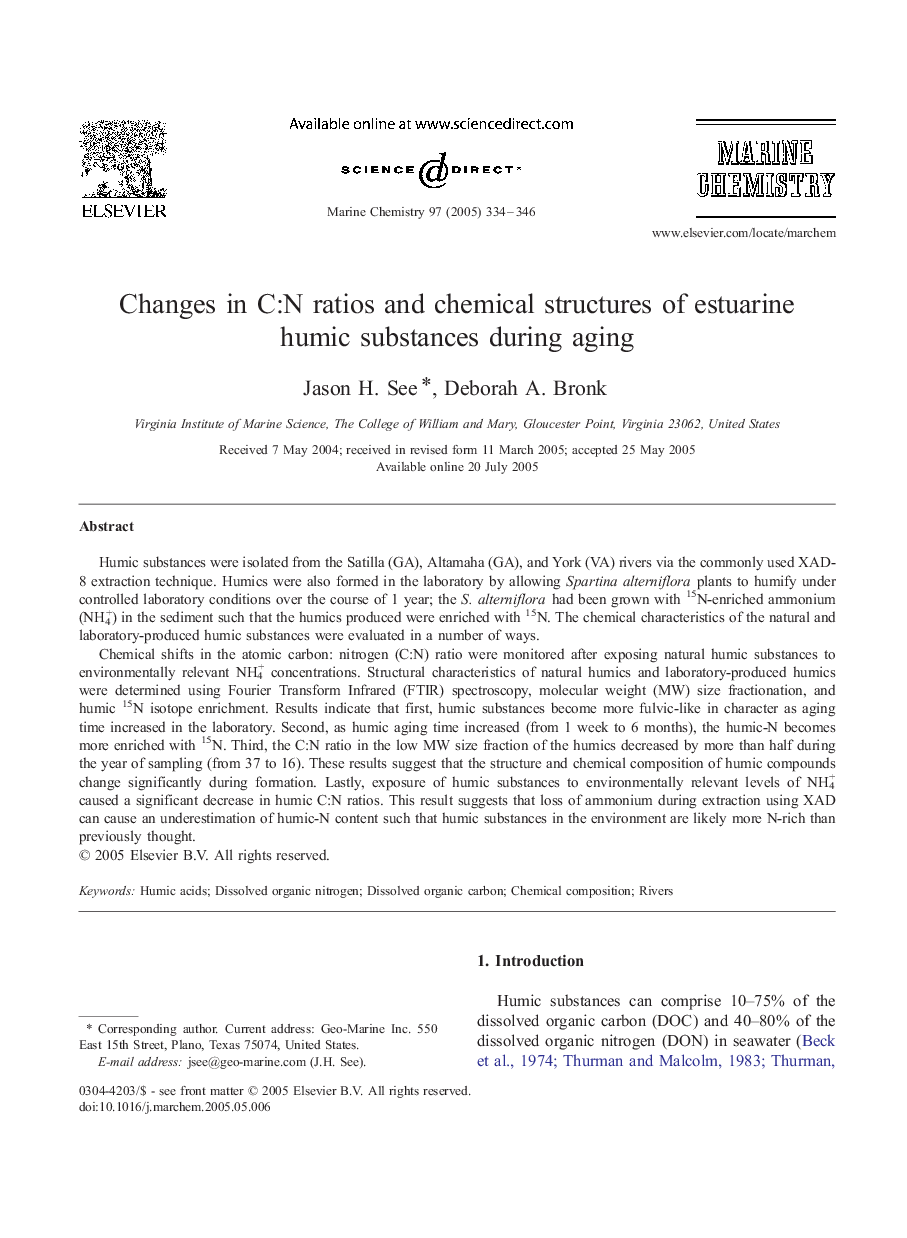| Article ID | Journal | Published Year | Pages | File Type |
|---|---|---|---|---|
| 9758335 | Marine Chemistry | 2005 | 13 Pages |
Abstract
Chemical shifts in the atomic carbon: nitrogen (C:N) ratio were monitored after exposing natural humic substances to environmentally relevant NH4+ concentrations. Structural characteristics of natural humics and laboratory-produced humics were determined using Fourier Transform Infrared (FTIR) spectroscopy, molecular weight (MW) size fractionation, and humic 15N isotope enrichment. Results indicate that first, humic substances become more fulvic-like in character as aging time increased in the laboratory. Second, as humic aging time increased (from 1 week to 6 months), the humic-N becomes more enriched with 15N. Third, the C:N ratio in the low MW size fraction of the humics decreased by more than half during the year of sampling (from 37 to 16). These results suggest that the structure and chemical composition of humic compounds change significantly during formation. Lastly, exposure of humic substances to environmentally relevant levels of NH4+ caused a significant decrease in humic C:N ratios. This result suggests that loss of ammonium during extraction using XAD can cause an underestimation of humic-N content such that humic substances in the environment are likely more N-rich than previously thought.
Related Topics
Physical Sciences and Engineering
Chemistry
Chemistry (General)
Authors
Jason H. See, Deborah A. Bronk,
